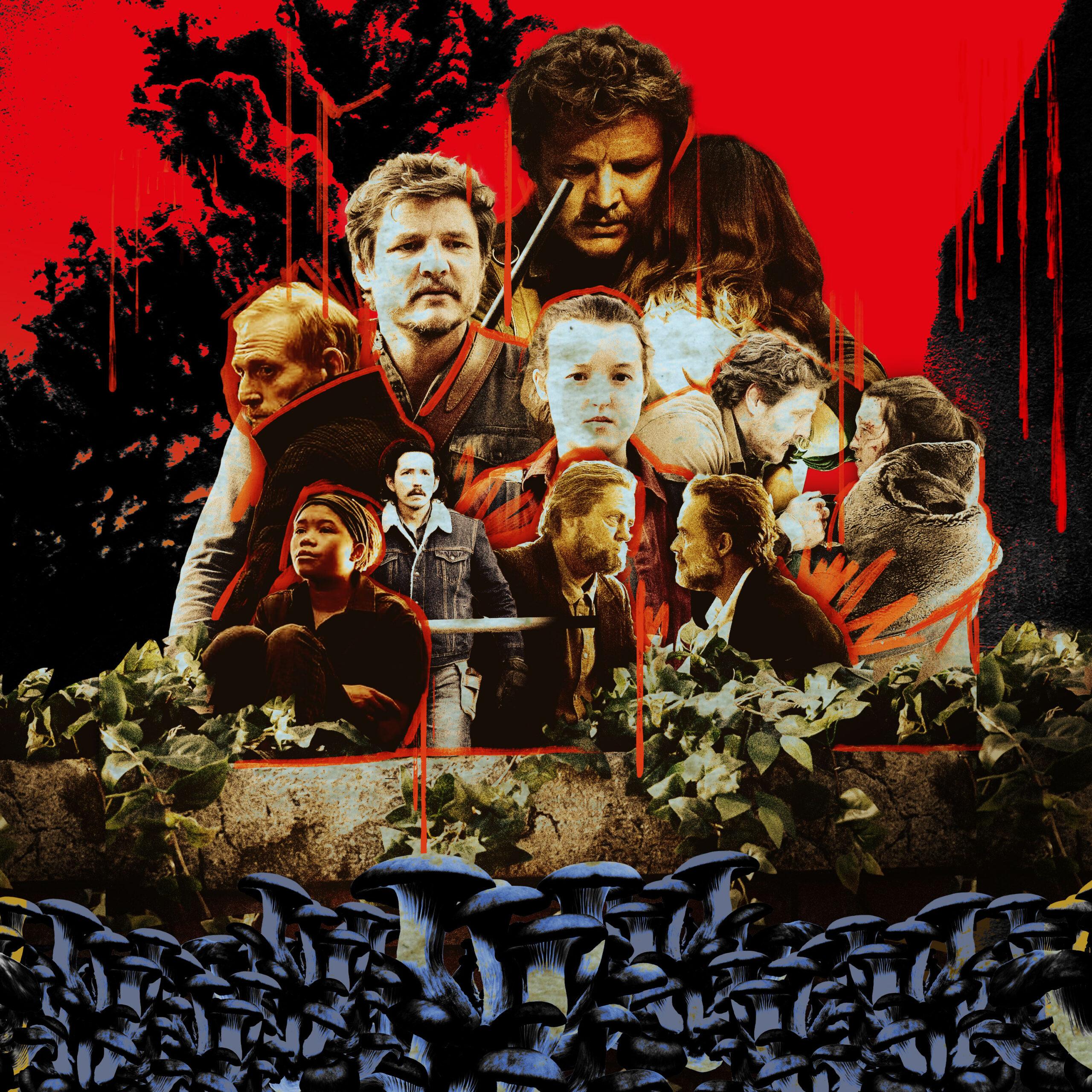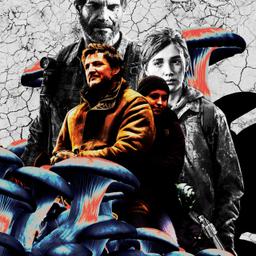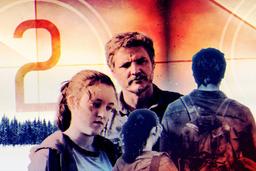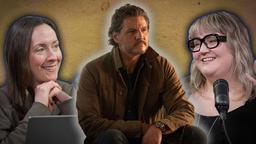Wait, What Do I Need to Remember From ‘The Last of Us’ Season 1 Again?
A refresher on the outbreak, the road trip, the fateful finale, and more
It’s been more than two years since the first season of The Last of Us ended in dramatic fashion. TV viewers might be getting more used to the long waits between TV seasons that have become the norm across the industry, but that doesn’t mean it’s getting any easier to remember what previously happened on any given series by the time it comes back around. If you’re in need of a refresher for The Last of Us ahead of its return on Sunday, then you’ve come to the right place.
The Last of Us Part II was a masterpiece, and the hit HBO series has a tough task ahead in living up to the 2020 video game. Given the considerable length of the sequel’s story, co-showrunners Craig Mazin and Neil Druckmann have made the decision to split its events into multiple seasons, with the second season featuring seven episodes. To prepare for the beginning of another journey through the bleak, infected world of The Last of Us, let’s take a look back at everything you’ll need to remember from its nine-episode first season. (Spoilers for Season 1—but not Part II or Season 2—ahead.)
The Cordyceps Infection
HBO’s The Last of Us begins with a departure from the original video game that’s set decades before the world was torn apart by a pandemic.
On a talk show in 1968, a pair of epidemiologists discusses the prospect of a devastating pandemic—and one of them predicts it with eerie precision. Dr. Neuman (John Hannah) theorizes that fungi spreading through humanity could be the cause, as there are some fungi “who seek not to kill, but to control.” Although it wouldn’t have been a possibility at the time of this TV appearance in the ’60s, Neuman suggests that should the world’s temperature ever rise to a certain level, humans would become viable hosts for the fungi.
“One gene mutates, and an ascomycete, Candida, ergot, Cordyceps, Aspergillus, any one of them could become capable of burrowing into our brains and taking control not of millions of us, but billions of us,” Neuman says. “Billions of puppets with poisoned minds permanently fixed on one unifying goal: to spread the infection to every last human alive by any means necessary. And there are no treatments for this. No preventatives, no cures. They don’t exist. It’s not even possible to make them.”
Fast-forward to 2003, and global warming has raised the world’s thermostat enough for Cordyceps to do exactly what Neuman foretold. Episode 2 opens with a glimpse at ground zero for the infection—Jakarta—as a mycology professor (Christine Hakim) from the University of Indonesia is brought into a government facility to examine the corpse of a woman who was bitten on her leg by another human. The attacker was a worker at a flour factory—which the mycologist says is the perfect substrate for the fungus—who suddenly turned violent, forcing the police to shoot her in the head. After the mycologist sees the fungus growing out of this woman’s mouth and hears that more than a dozen of the other factory workers are still missing, her best advice to combat the spread of Cordyceps is simple and devastating: “Bomb. Bomb the city.”
The Last of Us hooks its audience in the series premiere by showing the night the wider outbreak occurs, September 26, 2003, in Austin, Texas. It all happens quickly and brutally, as humans begin to turn on one another—even ones that haven’t been infected, as the government tries whatever it can to slow the spread of a disease it doesn’t yet understand. (As we see later on, that strategy of bombing major cities to slow the spread was adopted around the world, to varying degrees of success.)
By the time the main story line begins in earnest, 20 years have passed since that fateful day, and only vestiges of human civilization remain. Cities such as Boston and Kansas City have established quarantine zones, which are controlled by the oppressive military rule of the agency FEDRA. The infected have multiplied, and many of them have mutated over time. Some, known simply as “‘runners,” sprint mindlessly toward potential hosts; others, known as “clickers,” have been infected longer and have lost their sight but gained a form of echolocation and increased strength; and at least one, known as a “bloater,” has become a monstrous, hulking infected that has formed a body armor of fungus.
Every form the infected take is terrifying, grotesque, yet strangely beautiful, with some remarkable work done by the Last of Us crew to bring the creatures to life through a combination of practical effects and CGI. In the two decades since the original outbreak, the survivors—especially experienced ones who have left the confines of the quarantine zones—have learned more about how the infected operate. As Tess (Anna Torv), a smuggler, explains to Ellie Williams (Bella Ramsey) in Episode 2, the fungus connects across great distances, linking infected in a network as it tries to spread to new hosts.
“The fungus also grows underground,” Tess says, as they watch a swarm of infected gather in the distance. “Long fibers like wires, some of them stretching over a mile. Now, you step on a patch of Cordyceps in one place, and you can wake a dozen infected from somewhere else. Now they know where you are, now they come.”
Although the Cordyceps infection has brought humanity to the brink of extinction, The Last of Us is ultimately still a story about people and how they continue to pose a threat to one another at the end of the world.
Joel Miller
When The Last of Us shows the Cordyceps outbreak in Austin in the series premiere, we follow the disaster from the perspective of young protagonist Sarah Miller (Nico Parker). She lives with her father, Joel (Pedro Pascal), a contractor, and while there isn’t any confirmation of what happened to her mother, it’s clear that she’s no longer in the picture. Joel relies on her in many ways—not unlike how Joel’s brother, Tommy (Gabriel Luna), relies on him. It’s why Sarah’s death—at the hands of a trigger-happy soldier, under orders to slow the infection—completely breaks him.
After the 20-year time jump, Joel becomes the main protagonist. The loss of Sarah has forever altered him, and that tragedy shapes the decisions he makes as the season unfolds. In the aftermath of the outbreak, Joel and Tommy made their way to Boston, doing whatever they had to in order to survive. At some point they met Tess, whom Joel became romantically involved with, and together they robbed and even murdered innocent people. Tommy eventually left their crew to join a faction known as the Fireflies, a militaristic group of revolutionaries who are seeking to take down FEDRA and provide hope to humanity. (Tommy would ultimately leave the Fireflies as well, later making his way to Wyoming.)
Joel’s and Tess’s lives as smugglers change when they meet Ellie, a 14-year-old girl whom the Fireflies are trying to transport west to one of their facilities. They soon discover that Ellie was bitten by an infected, yet she never turned into one. In other words, she’s immune to the Cordyceps infection. And the Fireflies intend to use her to develop a cure that could save humanity.
When Joel first meets Ellie, he’s still traumatized by his daughter’s death and has his emotional guard up. He resists the job offer that he and Tess receive to escort Ellie outside the quarantine zone to rejoin the Fireflies, but Tess convinces him to take it. After Tess gets infected in the process, she makes Joel promise to see their mission through—and he keeps his word. But at a terrible cost.
Ellie Williams
Ellie is the key to saving humanity—or, at least, that’s the idea that Marlene (Merle Dandridge, reprising her role from the game), the leader of the Fireflies, instills in her.
At the beginning of Episode 9, The Last of Us goes back in time to reveal how Ellie was born. Her mother, Anna (Ashley Johnson), was a member of the Fireflies while she was pregnant with Ellie. And on the day that Ellie was born, Anna was bitten by an infected.
Anna manages to kill her pursuer while giving birth to Ellie, in a truly wild sequence of events. As she notices that she’s been bitten, she immediately cuts the umbilical cord, but it can be presumed that the Cordyceps infection still passed to Ellie. The true nature of how Ellie became immune was always a mystery in the video game series, and the HBO adaptation added this scene—reintroducing Johnson, who voiced Ellie in both games, as her mother—to shed some light on her origin story.
Before Anna died, she entrusted Ellie to Marlene’s care, and the Firefly brought her to Boston and hid her in plain sight, as an orphan attending a FEDRA school. But one night a teenage Ellie sneaked out with her best friend, Riley (Storm Reid), to visit a forbidden mall, and she—along with Riley—was bitten by an infected, starting the chain of events that would lead to her winding up in Joel’s care. Although Riley didn’t survive the tragic encounter at the mall, Ellie did, and Marlene made it the Boston Fireflies’ mission to bring her to Salt Lake City to help the organization’s doctors develop a vaccine.
The Journey Across Postapocalyptic America
It wasn’t Marlene’s plan, but circumstances forced her to trust Joel and Tess to bring the most important person in the world across the country to a location that was never divulged to them. Tess doesn’t even make it past the Massachusetts state line, but Joel brings Ellie to Saint Mary’s Hospital in Salt Lake City in one piece. However, their nightmare of a road trip takes several months to complete and includes a lot of near-death experiences.
At the start of Joel and Ellie’s adventure, Joel is still perpetually grumpy, emotionally closed off, and devoid of any true purpose aside from saving Tommy from a threat that doesn’t actually exist. (All Joel knows is that his brother has gone weeks without making radio contact.) Meanwhile, Ellie responds with childlike wonder when she sees the world beyond the walls of the Boston quarantine zone for the first time she can remember. By the end of their journey, all of that changes for each of them.
The longer Joel stays with Ellie, the more he begins to view her like his own daughter—and that terrifies him. By the time they arrive in Wyoming, after three months of traveling together, Joel is starting to experience panic attacks. His worst fear is that he’ll fail to protect Ellie in the same way he failed to protect Sarah. This sense of dread is compounded by their experiences, such as meeting a man named Henry (Lamar Johnson) and his younger brother, Sam (Keivonn Woodard), the latter of whom Henry is forced to kill after he gets infected.
Ellie’s wonder has all but vanished by the time the first season ends, as she’s similarly affected by the stark reality of a world that might already be beyond saving. Having been abandoned—whether by choice or involuntarily—by everyone in her life except Joel, her worst fear is winding up alone. The crucial turning point for her comes in the penultimate episode, as Joel is recovering from a stab wound and she gets captured by a group of cannibals. Ellie manages to escape from the clutches of their twisted leader, David (Scott Shepherd), who attempts to rape her. She kills him with a meat cleaver, hacking away at him until she finally leaves the burning building they were fighting in to reunite with Joel.
“She learns that she really has this capacity for violence, and that it's real, it’s tangible, and that it’s happening,” Ramsey told GQ in a 2023 interview about the pivotal scene. “I think she’s always felt violence and rage in her, but she’s never expressed it quite in the way she does in this moment. This is the climax of all of that rage. I think she scares herself with it.”
Ellie is traumatized by her encounter with David, but she endures and survives. She and Joel make it to Saint Mary’s Hospital, much to Marlene’s surprise. Yet soon enough, Marlene wishes they hadn’t.
What Joel Did …
Much like the video game before it, The Last of Us Season 1 ends with an agonizing, ambiguous conclusion that centers on a decision that fans have debated for more than a decade. (Even the co-showrunners have different opinions on the matter.)
As Joel and Ellie get closer to the hospital, Joel starts getting cold feet and suggests to Ellie that they simply return to Jackson, Wyoming, and forget about their business with the Fireflies. But Ellie, who still believes in her greater purpose, has already made up her mind. “After all we’ve been through, everything I’ve done, it can’t be for nothing,” she says.
When they arrive, Joel and Ellie are separated, and Marlene—initally unaware of the bond that has formed between them—makes the mistake of telling Joel the truth about what will happen to Ellie.
“Our doctor, he thinks that the Cordyceps in Ellie has grown with her since birth,” she explains. “It produces a kind of chemical messenger. It makes normal Cordyceps think that she’s Cordyceps. It’s why she’s immune. He’s gonna remove it from her, multiply the cells in a lab, produce those chemical messengers, and then we can give it to everyone. He thinks it could be a cure, Joel. A cure.”
“Cordyceps grows inside the brain,” Joel says, realizing that this surgery would kill her.
“It does,” Marlene replies.
By now, Joel has admitted to Ellie that she effectively saved him, giving a hopeless, broken man a reason to live again. And he refuses to lose another daughter. Marlene gives him the chance to leave, but Joel frees himself from two (very incompetent) Firefly escorts and saves Ellie in return. In doing so, he shoots every Firefly in his path, including the surgeon and Marlene. When Ellie finally wakes up, still dazed from being put under for surgery, she’s in the back seat of a car as Joel drives them back to Jackson.
Joel tells Ellie a flimsy cover story about how the Fireflies found dozens of other people who are immune to the Cordyceps infection, yet they still couldn’t develop a cure. He explains that the hospital was ostensibly attacked by raiders and he and Ellie barely made it out alive. Ellie clearly doesn’t believe a word Joel is saying—yet she wants to. Outside Jackson, she gives him one last chance to explain himself.
“Swear to me,” Ellie demands. “Swear to me that everything you said about the Fireflies is true.”
“I swear,” Joel says, after hesitating. And all Ellie can offer in response is “OK.”
Joel’s lie marks the closing moment of the finale, and the consequences of his actions will hang over Season 2. In HBO’s “Inside the Episode” segment about the finale, Druckmann and Mazin delve into Joel’s fateful decision to effectively sacrifice humanity to save Ellie.
“The thought experiment for the whole story is the unconditional love a parent feels for their child,” Druckmann explains. “And how far can you take this story to demonstrate what that means?”
“It is not just about the beautiful parts of love; it’s also about the dark side,” Mazin adds. “It’s about how everything wonderful and everything bad can ultimately start with love.”
Heading into Season 2, Joel and Ellie have returned to Jackson, but the lie has followed them to their sanctuary. Joel has to live with what he’s done, while Ellie has to process the fact that her immunity—and everything that they experienced on their journey to Salt Lake City—meant nothing in the end. As The Last of Us finally brings us back into its world on Sunday, we may start to see the ramifications of Joel’s unconditional love.




